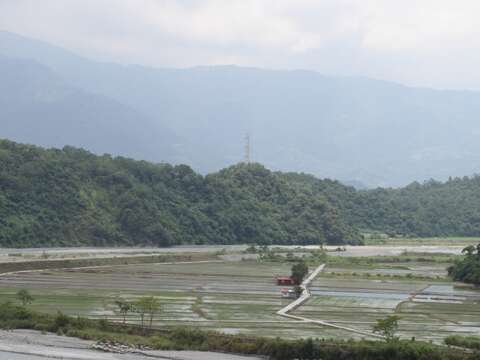Anchor
A Stroll from Duq Pu San to Du Da
Updated:2025-03-19
2599
A hidden paradise-this was my first impression of the Duq Pu San Tribe. The church chimes from the village revived my memory- I had been here before, years ago. It was a drizzling afternoon. The children were laughing and chasing each other as their cheeks were kissed by the raindrops. They tugged my hand and played hide-and-seek with me. I think I left my worries behind in the city, along with my nerves and confusion. Here, I saw the most beautiful smiles, and before I knew it, I had found peace and serenity right here on the streets of the Duq Pu San village.
Long houses from the Japanese colonial period line the streets of the Duq Pu San village, as "Duq Pu San" literally means "long house." Now, the buildings' wooden structures are covered with ceremonial totems of the Bunun people. This is to pass on their cultural heritage while granting the streets an unusual beauty unique to Duq Pu San. A traveler's senses are also treated to the aroma of camellia oil and soy sauce, and the Chinese medicinal herbs growing on the mountains provide a picturesque backdrop to the village's farms.
Farther into the mountains, on rich soil circled by the Fengping River, are the homes of the Seediq and Truku people, while the Swa Sal and Du Da Tribes are located at the foot of the mountains. A stroll from Duq Pu San to Du Da is a journey into a paradise hidden inside the valleys, where the mist in the mountains adds a touch of mystery to the traveler's curiosity. Should you come here one day, take your time to walk around and relax. The mist and raindrops will calm you as you immerse yourself in the tranquility of the mountains.
Glossary:
Emi-Detached House of the Duq Pu San village
Lovely children in the Duq Pu San village
A hidden paradise
Long houses from the Japanese colonial period line the streets of the Duq Pu San village, as "Duq Pu San" literally means "long house." Now, the buildings' wooden structures are covered with ceremonial totems of the Bunun people. This is to pass on their cultural heritage while granting the streets an unusual beauty unique to Duq Pu San. A traveler's senses are also treated to the aroma of camellia oil and soy sauce, and the Chinese medicinal herbs growing on the mountains provide a picturesque backdrop to the village's farms.
Farther into the mountains, on rich soil circled by the Fengping River, are the homes of the Seediq and Truku people, while the Swa Sal and Du Da Tribes are located at the foot of the mountains. A stroll from Duq Pu San to Du Da is a journey into a paradise hidden inside the valleys, where the mist in the mountains adds a touch of mystery to the traveler's curiosity. Should you come here one day, take your time to walk around and relax. The mist and raindrops will calm you as you immerse yourself in the tranquility of the mountains.
Glossary:
- Duq Pu San
- Swa Sal
- Du Da
- Bunun
- Truku
- Seediq
- Emi-Detached House
Emi-Detached House of the Duq Pu San village
Lovely children in the Duq Pu San village
A hidden paradise


